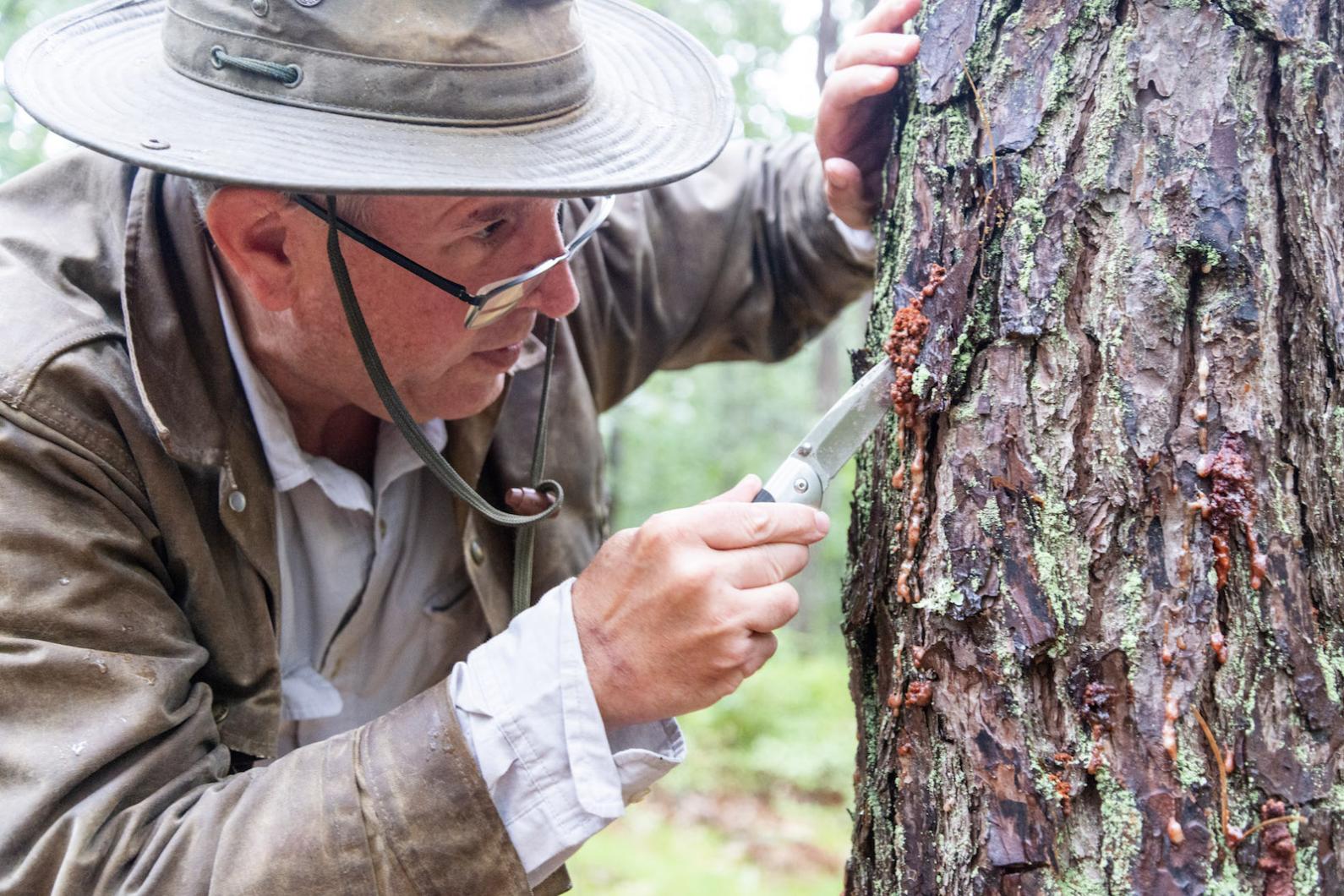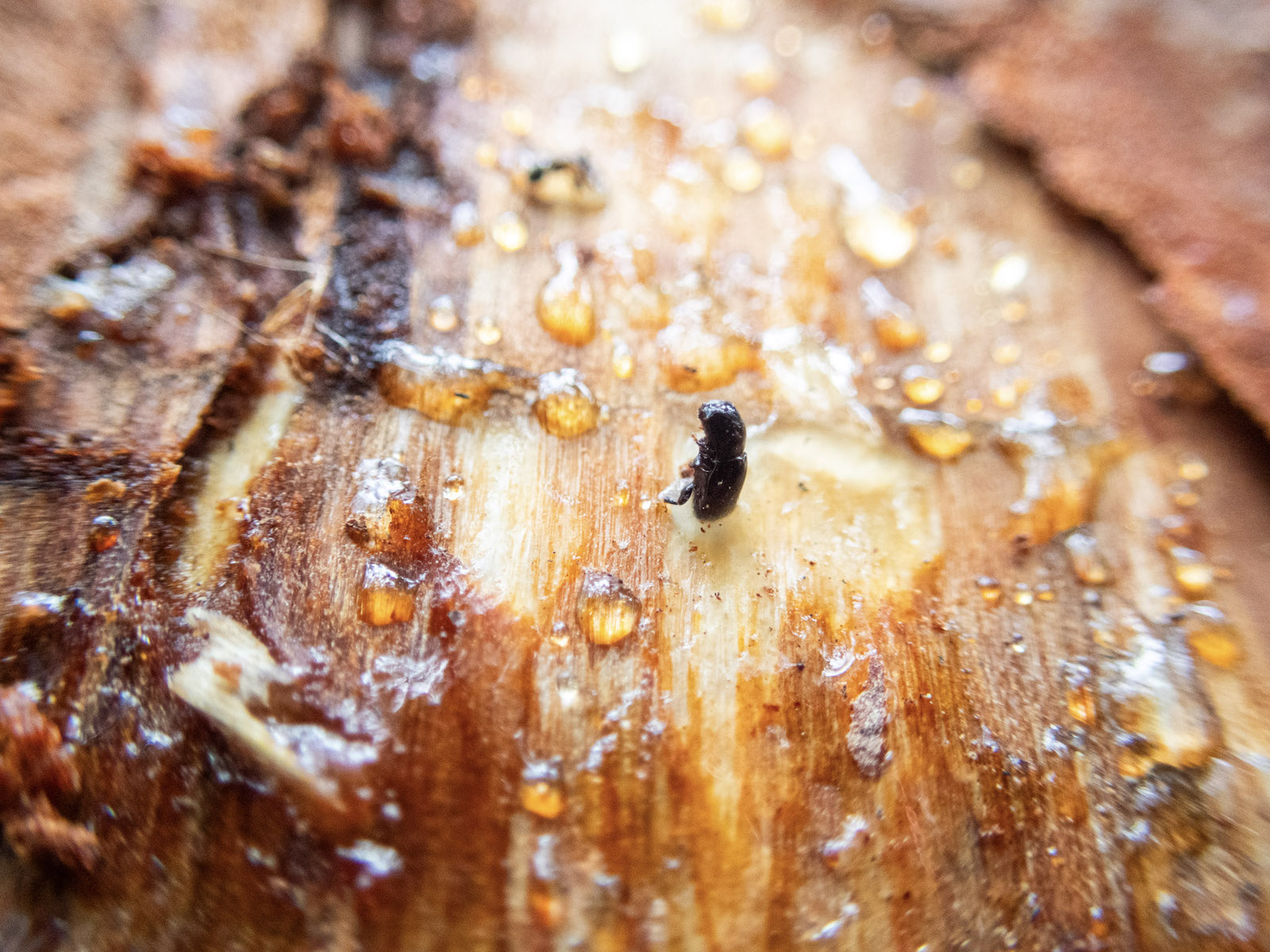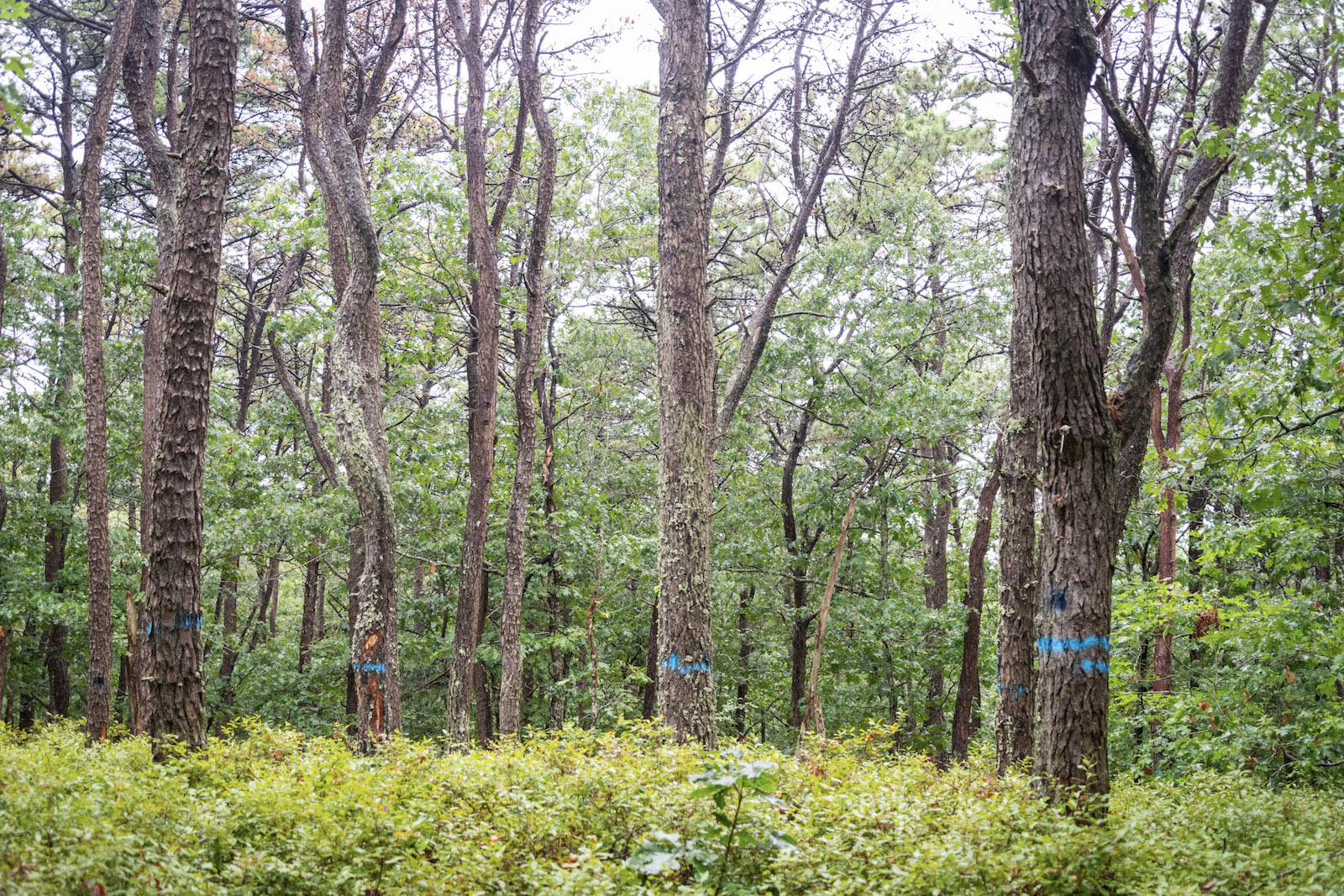Rapidly, at a pace of 10 feet per day, an infection of southern pine beetle is spreading in the pitch pine forest at Sheriff’s Meadow’s Phillips Preserve near Lake Tashmoo.
Though each beetle is smaller than a grain of rice, the symptoms this pest causes are obvious at a glance. The once green crowns of these towering trees have turned a deathly orange, and their mighty trunks are coated in globs of sicky pitch sap, the tree’s attempt to expel the beetle and its larvae from the inner bark.
But Sheriff’s Meadow is acting fast to combat this vigorous beetle, said executive director Adam Moore. Later this week, the foundation will begin clearing two acres of pitch pine on the nearly 70-acre property, in an effort to disrupt the invasive beetle before it takes over.
“This is the first outbreak of it that we’re aware of on-Island,” said Mr. Moore, though he said he suspects it is widespread in other Vineyard pitch pine forests. “The southern pine beetle is from down south, but it’s been working its way north as the winters have gradually warmed up through climate change.”
Conor Laffey, supervisor at the Manuel F. Correllus State Forest, confirmed that the beetle is also present in the state forest.
The pest first came to the attention of Mr. Moore this May during a conversation with conservationists on Nantucket also dealing with the beetle. He told his staff to be on the lookout for signs, and they almost immediately found evidence at Phillips Preserve.
Since then, the spread has been rapid.
“It keeps me up at night, because these beetles don’t stop,” Mr. Moore said. “The thing is, I love the Phillips Preserve, but so does the southern pine beetle.”
Wearing a brown canvas hat and a brown canvas jacket, Mr. Moore trudged through the mud on a recent rainy morning on the hunt for beetle specimens. Spotting a tree dotted with little bore holes and oozing with thick orange pitch, he unsheathed his hatchet and began chipping into the bark in search of the pest.
“You can see how much the tree is suffering,” he said, pausing to look up at the tree’s dying foliage and beetle-eaten bark. Mr. Moore pulled out his pocketknife and stuck it into a sticky glob of resin to pull out a little black speck, an individual southern pine beetle.
On their own, each one is tiny, but en masse they can wreak havoc. Once a beetle locates its target, it drills below the bark into a thin layer of living wood tissue and lays eggs. Both the larvae and adult bugs can then feast.
A tree might be able to deal with a few of the bugs, flushing them out by expelling that sticky pitch, but eventually enough bore in to overwhelm the tree, eating enough tissue to cut off its circulation.
“The beetles move from tree to tree and they communicate with chemicals,” Mr. Moore said. “When they are attacking a tree that’s good, they emit a pheromone that calls other beetles...But then there get to be too many beetles, so they emit another pheromone that says, ‘we’re full, go to the next tree.’”
That chemical communication is the key to the beetles’ quick spread, and is what Sheriff’s Meadow is hoping to combat with their planned cutting.
“We want to disrupt their communication network,” Mr. Moore said, describing their plan as a “sanitation” or “suppression” cutting. In addition to taking down dead and infected trees, they will also clear a buffer around the infected area, with uninfected trees placed beyond the pheromones’ range.
With the intense speed at which the infection is moving, Mr. Moore said he isn’t sure exactly how much they will need to cut. By the time work gets under way, they may have to add an extra acre to the clearing.
Though the project certainly won’t completely eradicate southern pine beetle from the Island, Mr. Moore takes an optimistic approach to the fate of Island pine forests. New pitch pine will continue to grow in the place of the dead, he said, and work can be done to mitigate its spread elsewhere by thinning out existing pitch pine density.
Other places further south have already dealt with the pest, Mr. Moore said, and that playbook will be available to the Vineyard.
“Ultimately the southern pine beetle is here to stay and we need to get used to it,” he said.








Comments
Comment policy »